More Than Just a Door: The Real-Deal Guide to Specifying Italian Doors for Hotels
I’ll never forget a consultation I did for a high-end hotel project. The developer was obsessed with creating pure luxury, and we’d spent weeks agonizing over fabrics and lighting. Then, he just casually pointed at the plans and said, “For the doors, just get something nice from Italy.” That simple request kicked off a three-month deep dive that taught me a lesson I carry with me on every single job.
In this article
A hotel room door isn’t just a slab of wood. It’s the very first and last physical thing a guest touches in their private space. It’s a silent promise of security, peace, and quality. Honestly, choosing the right one is one of the most critical decisions you can make for a property.
Sourcing from Italy isn’t just about the prestigious “Made in Italy” tag; it’s about tapping into a legacy of incredible design and craftsmanship. But with that legacy comes complexity. You’re not just buying a door; you’re investing in a piece of engineering that must meet incredibly strict codes for fire and sound. This guide is everything I’ve learned, from walking factory floors in the Brianza region to preventing costly mistakes in hotel corridors.
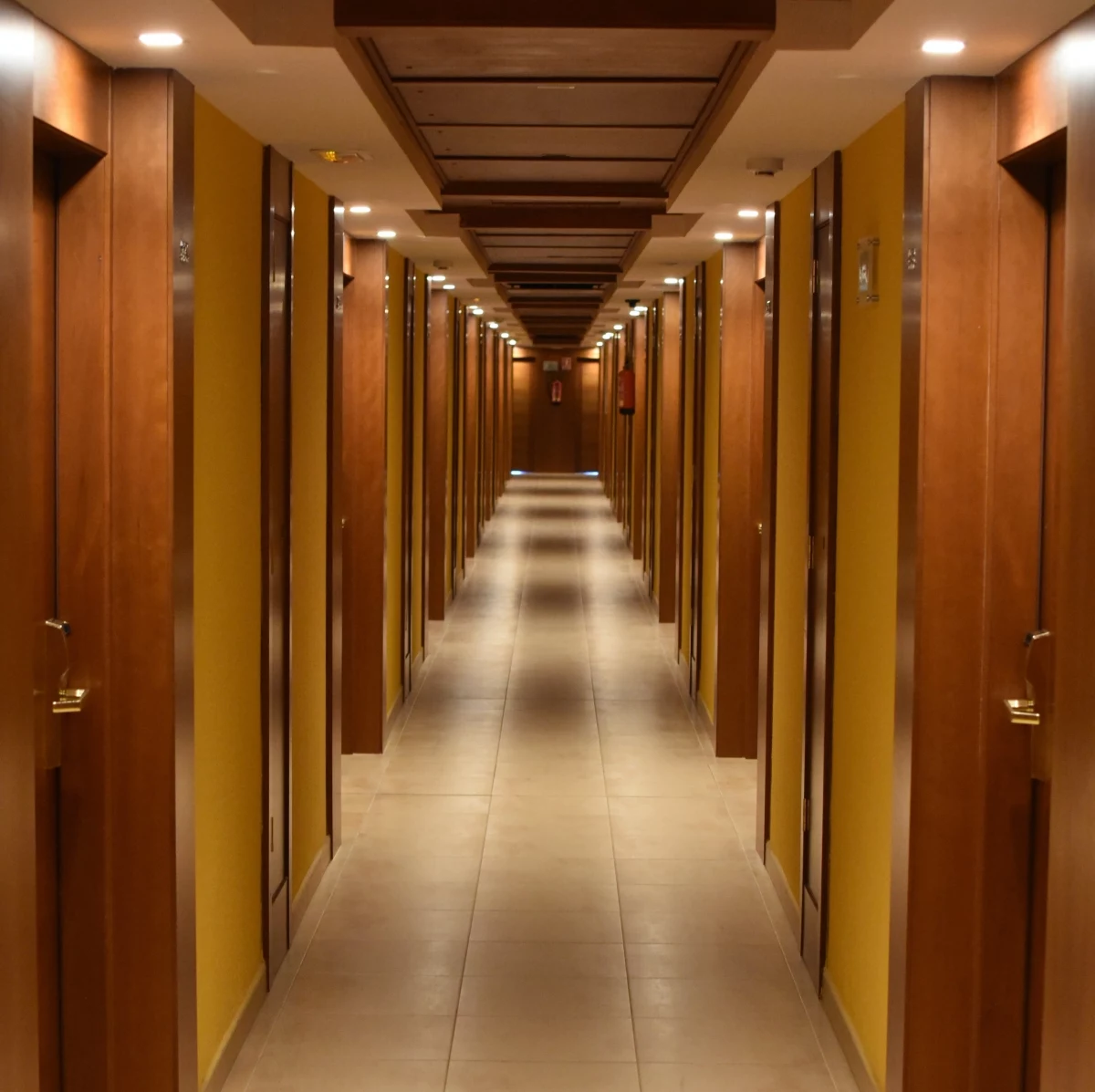
The Hidden Science: What Makes a Performance Door Tick
A hotel door does a lot more than just open and close. It has to perform. Getting a handle on the basic science behind it is the first step to making a smart choice that protects your investment and your guests.
The Quest for Quiet: Understanding Sound Ratings
Noise complaints are the bane of any hotel operator’s existence. Your first line of defense? The guest room door. A door’s ability to block sound is measured by its Sound Transmission Class (STC) rating. The higher the STC number, the quieter the room.
To give you some context, a standard door in a house might have an STC of 25. For a respectable hotel, you shouldn’t even consider anything below STC 35. For luxury properties, we’re aiming for STC 40 or even higher.
Did you know? A 10-point increase in the STC rating (say, from 30 to 40) is perceived by the human ear as making the noise about half as loud. It’s a massive difference.
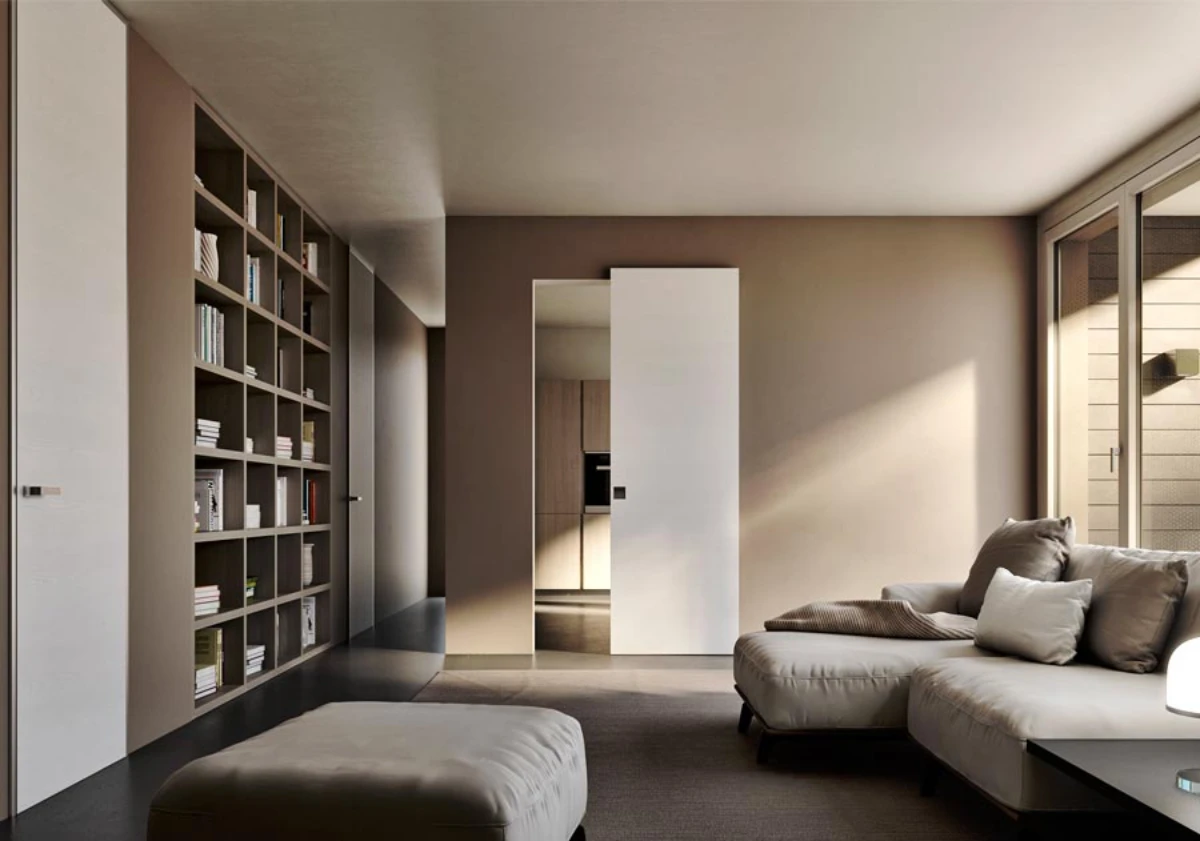
So, where does that rating come from? It’s not just the door itself, but the entire assembly. A solid core is non-negotiable—usually particleboard or a wood composite that provides the sheer mass needed to stop sound waves. A hollow core door is basically a drum and a recipe for disaster. I once consulted on a project where they tried to save money with hollow doors; the noise complaints were so overwhelming they had to replace all 200 of them within a year, effectively paying for their doors twice.
But the core is only half the battle. Sound travels like water, finding any little gap. The best manufacturers engineer their doors and frames as a complete system. This includes soft rubber or silicone acoustic seals (gaskets) fitted into the frame. When the door closes, it compresses these seals, creating an airtight barrier. The unsung hero here is the automatic door bottom, or drop seal. It’s a clever mechanical device hidden in the bottom of the door. As the door swings shut, a tiny plunger hits the frame, triggering a seal to drop down and press firmly against the floor. Without these seals, even the heaviest door will leak sound like a sieve.
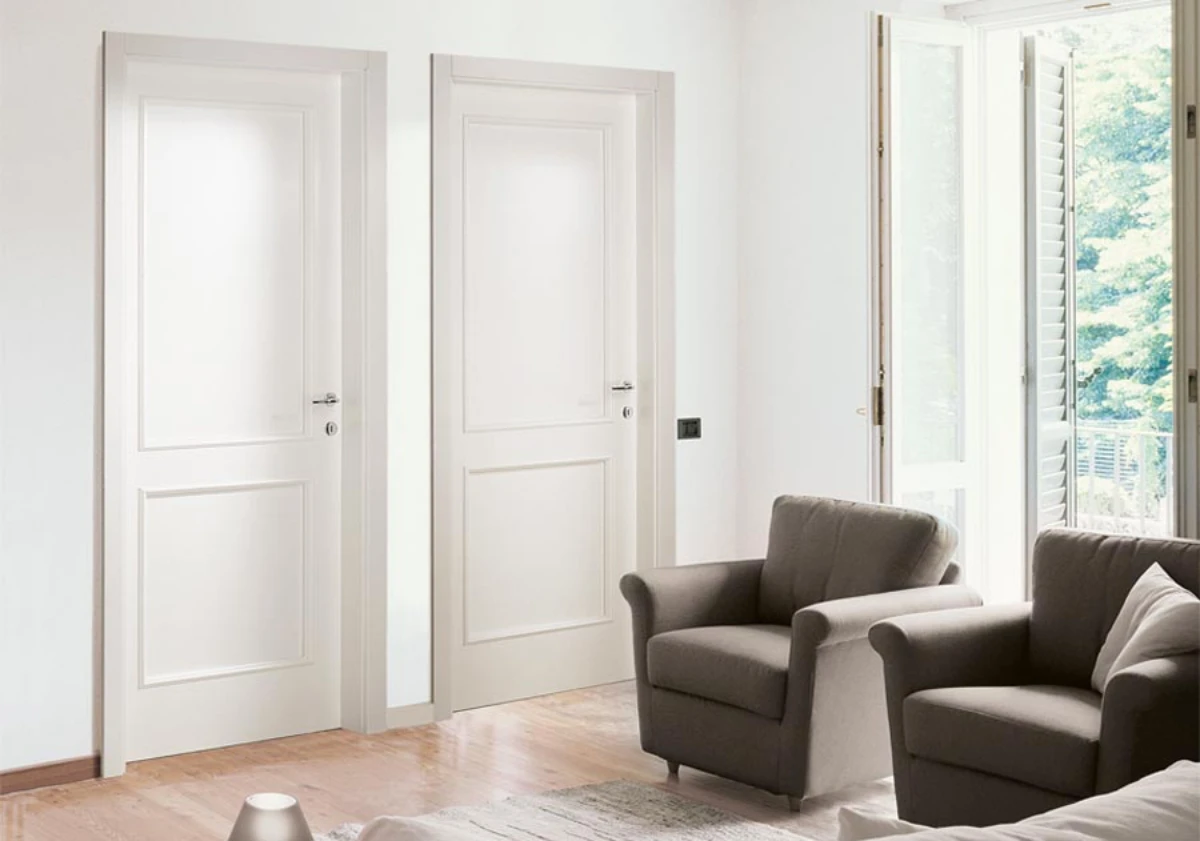
Fire Safety: The Non-Negotiable Bottom Line
Let’s be crystal clear: this is the most critical part of a hotel door. It’s not an option, it’s a life-safety requirement governed by strict building codes like the NFPA standards in the U.S. and EN standards in Europe.
Fire doors are rated in minutes—like FD20, FD30, or FD60. This number tells you how long the entire assembly can hold back fire and smoke. For a typical guest room entrance, an FD20 or FD30 rating is the standard. And I mean the entire assembly: the door, the frame, and the hardware. You can’t just slap a 30-minute door into a 20-minute frame and call it a day. The rating is only valid if all components are certified to work together.
A key piece of tech here is the intumescent seal. These look like simple plastic strips, but when they get hot, they swell up to many times their original size, completely sealing the gap between the door and the frame to block smoke and flames. When I review shop drawings, I’m always looking for these. A reputable factory will happily provide fire-rating certificates from an accredited lab like UL or Intertek.
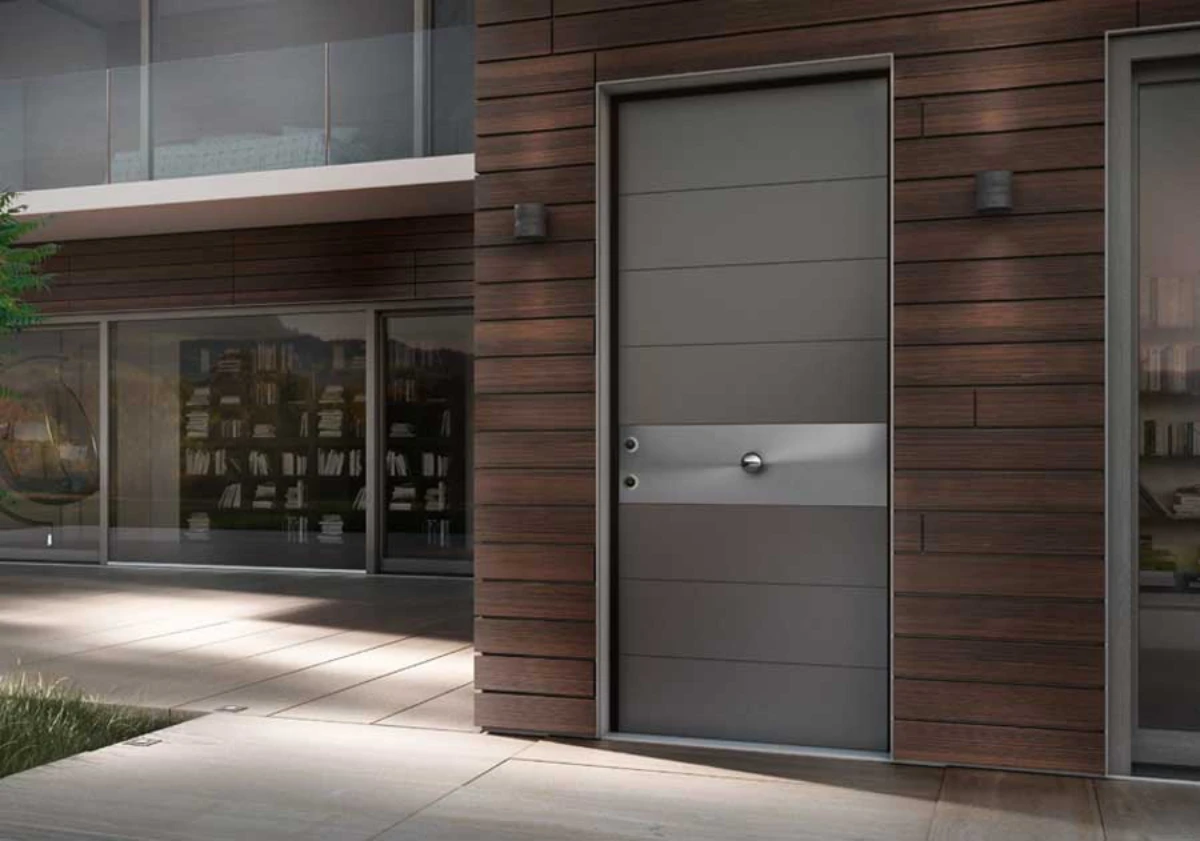
Picking a Finish That Lasts
A hotel door gets a beating. It’s touched, knocked by luggage, and sprayed with cleaning chemicals thousands of times a year. The finish has to be tough. While solid wood is beautiful, it can warp or crack if the building’s humidity isn’t perfectly controlled. That’s why most high-performance doors use a stable, engineered wood core.
So what goes on the outside? You’ve got a few key choices:
- Wood Veneer: This gives you the authentic beauty and warmth of real wood. Pros offer different cuts, like plain sliced or quarter sawn, that create different grain patterns. It’s the top choice for a classic, luxurious feel, but it comes at a higher price and needs a bit more care.
- High-Pressure Laminate (HPL): Don’t picture your grandma’s old laminate countertop. Modern HPL is incredibly durable, realistic, and a workhorse. It’s highly resistant to scratches, impact, and harsh chemicals. It can mimic wood, stone, or solid colors with amazing fidelity. This is often the smartest choice for high-traffic areas.
- Lacquer Finish: For a sleek, modern, and seamless look (especially in whites, grays, or bold colors), a high-quality polyurethane or catalyzed lacquer is fantastic. The key is “high-quality”—a cheap lacquer job will chip and yellow over time.
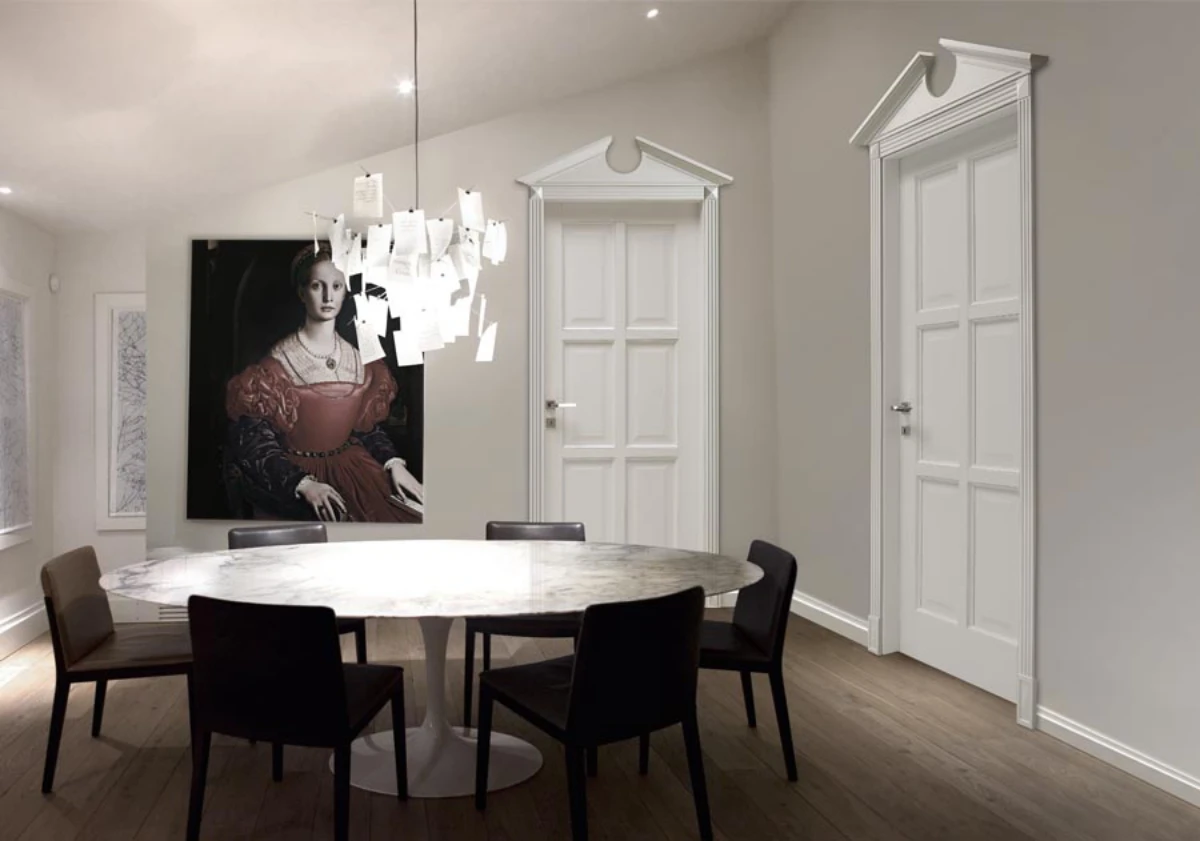
The Pro’s Playbook for Sourcing and Specifying
Buying technical doors for a commercial project is nothing like furniture shopping. It’s a procurement process that demands precision. Here’s how you get it right.
First Things First: Where Do You Even Start?
Okay, so you want Italian doors. You don’t just Google “Italian door factory.” The best place to start is by immersing yourself in the industry. The pros often head to major trade shows, with the most famous being the Salone del Mobile in Milan, to see manufacturers and trends up close. Many of the top technical door companies are clustered in the Brianza region, north of Milan. For those who can’t fly to Italy, hiring a specialized sourcing agent or a design consultant with experience in European procurement can be a lifesaver. They know the factories, the pitfalls, and the process.
The Perfect Door Spec Sheet Checklist
Before you even think about asking for a quote, you need a document that tells the factory exactly what to build. A vague request gets you a vague (and probably wrong) product. Your spec sheet is your bible. It must include:
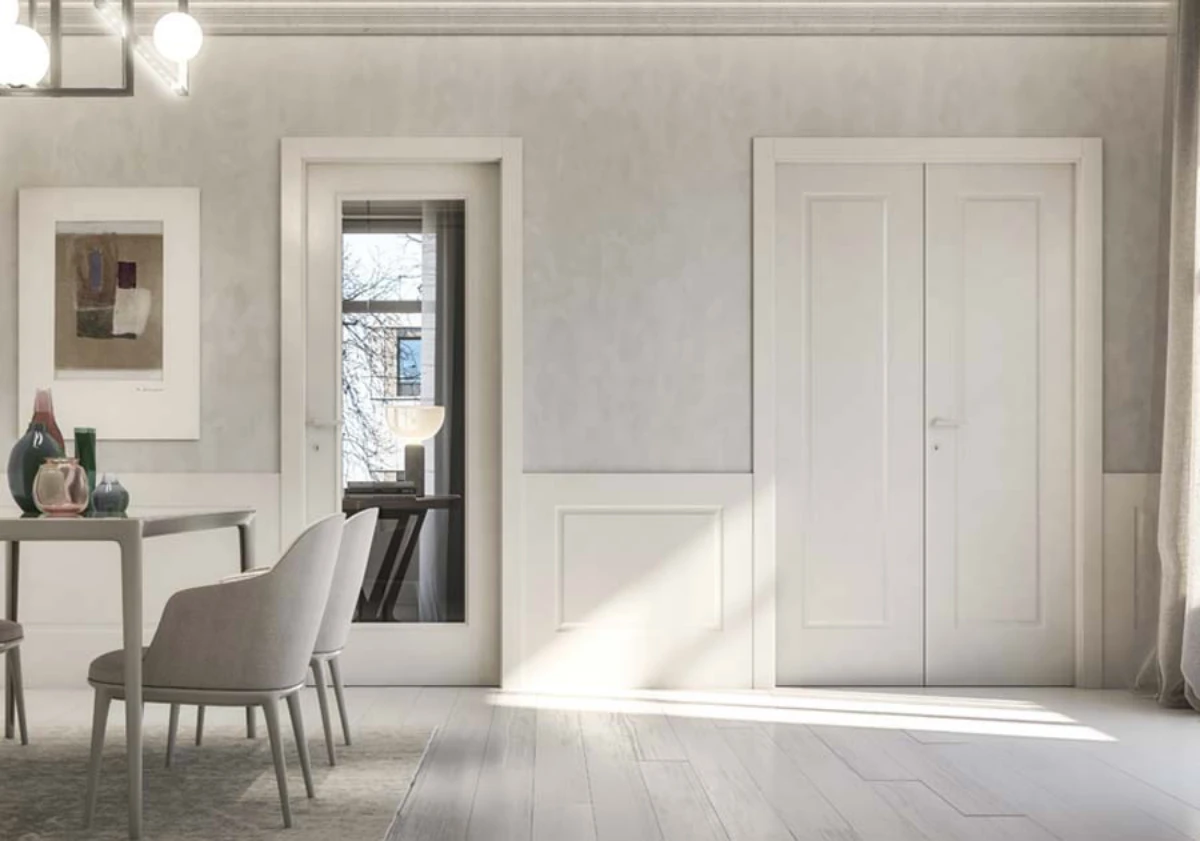
- Dimensions: Exact height, width, and thickness of the door slab, plus the wall thickness for the frame.
- Handing: The swing direction (left-hand, right-hand, etc.). Getting this wrong is a classic, costly mistake.
- Core Type: Specify “solid particleboard core” or similar.
- Acoustic Rating: State the required STC rating (e.g., STC 38).
- Fire Rating: State the required rating (e.g., FD30) and the testing standard it must meet.
- Finish Details: Be specific! Not just “oak veneer,” but “Quarter Sawn White Oak veneer.” If it’s laminate, provide the manufacturer and model number (e.g., Formica 884K-58).
- Hardware Prep: The factory won’t supply the locks, but they need to cut the holes. You must provide a hardware schedule with precise dimensions for the lockset, hinges, viewer, and everything else.
Vet the Manufacturer, Not Just the Website
A glossy website doesn’t mean much. Some companies are just middlemen. You want a true manufacturer who controls the quality from start to finish. Here’s how to check:
- Ask for Factory Details: A real maker is proud of their facility and will be happy to share photos or even do a virtual tour.
- Demand Certifications: Get copies of their fire and acoustic certificates. Check that the testing lab is reputable.
- Request a Corner Sample: Never, ever order from a picture. A corner sample is a small cross-section of the door that shows you the core, the edge banding, and the finish quality. It should feel dense and solid.
- Check References (The Right Way): Ask for a list of hotels they’ve supplied in your country. Then, call the facility manager. Don’t just ask, “Do you like the doors?” Get specific. Ask questions like: “How has the finish held up to cleaning carts and luggage?” or “Have you had any issues with the acoustic seals compressing or failing over time?” and “Was the hardware prep 100% accurate when the doors arrived on site?”
The 5-Minute Shop Drawing Sanity Check
After you place an order, the factory sends back shop drawings—the final technical blueprints. This is your absolute last chance to catch errors. I use a quick sanity check on every single drawing:
- Handing: Does the swing direction on the drawing match the architectural floor plan?
- Dimensions: Do the height, width, and thickness match your spec sheet?
- Hardware Locations: Check the hinge and lockset locations against your hardware supplier’s spec sheets. An error of a few millimeters here is a disaster on-site.
- Ratings: Is the correct fire and acoustic rating (FD30, STC 38, etc.) clearly noted on the drawing?
- Finish Code: Does the finish code on the drawing match the exact veneer or laminate you specified?
Do not sign off on these drawings until they are perfect. A fix on paper is free; a fix on 150 doors in a shipping container is a nightmare.
Heads Up: 3 Mistakes That Can Derail Your Project
Even with the best intentions, a few common slip-ups can cause major headaches. Watch out for these:
- Ordering Too Late: This is the number one issue. Remember the 14-20 week lead time. Order your doors as soon as the building’s final dimensions are locked in.
- Ignoring Installation Costs: A high-performance door installed poorly is just a bad door. Budget properly for experienced finish carpenters. This is not a job for a general handyman.
- The Sample Trap: A beautiful corner sample is great, but it doesn’t guarantee a trustworthy company. Vet the manufacturer’s reputation, references, and certifications just as rigorously as you inspect the sample.
The Practical Stuff: Budget, Timelines, and Logistics
A beautiful design is useless if it doesn’t fit the budget or the construction schedule. Let’s talk real-world numbers and timelines.
An Honest Look at the Budget
A certified, high-performance Italian door assembly (that’s the door, frame, and seals) is an investment. You should realistically budget anywhere from $800 to over $2,000 per door. And that’s before hardware, shipping, customs, and installation.
What drives that cost up? A basic, solid-core door with a standard laminate finish and an STC 35 rating will be at the lower end, around that $800-$950 mark. Want a nice wood veneer? Add $200-$400. Need a higher acoustic rating like STC 40? That’s probably another $150. Fancy concealed hinges for that minimalist look? Tack on another $100 or more. The price climbs with every custom feature and higher rating.
Managing the Long Wait: Lead Times and Logistics
You can’t get these doors in a hurry. From the moment you approve the shop drawings, production usually takes 8 to 12 weeks. Then, ocean freight from Italy to the U.S. can take another 4 to 6 weeks. Add in time for customs clearance, and you’re looking at a total lead time of 14 to 20 weeks. This has to be baked into your project schedule from day one.
By the way, getting them from the factory to your job site involves more than just waiting. You’ll be dealing with freight forwarders, customs brokers, and potentially significant import duties. Make sure you get a clear quote on shipping (usually FOB, meaning you take ownership at the Italian port) and have a customs broker lined up to handle the paperwork to avoid delays when the container lands.
A Final Word of Advice
As a final check, I always remember what a mentor told me: “The quality of a door is hidden in its edges.” Before you sign off on a delivery, look closely at the edge banding. On a cheap door, it’s a thin, flimsy strip that will be the first thing to chip and peel. On a quality Italian door, the edge will be a thick, solid piece of wood or a durable ABS band that’s perfectly integrated. It’s a tiny detail that reveals everything about a manufacturer’s commitment to longevity.
Choosing the right door is a journey. It requires diligence, a sharp eye for detail, and a realistic grasp of time and money. But when you finally walk down that finished hotel corridor and the only thing you hear is the satisfying, solid click of a door closing into a sealed frame… you’ll know you got it right. You’ve built a foundation of quality and safety that every guest will feel, even if they never notice it at all.










